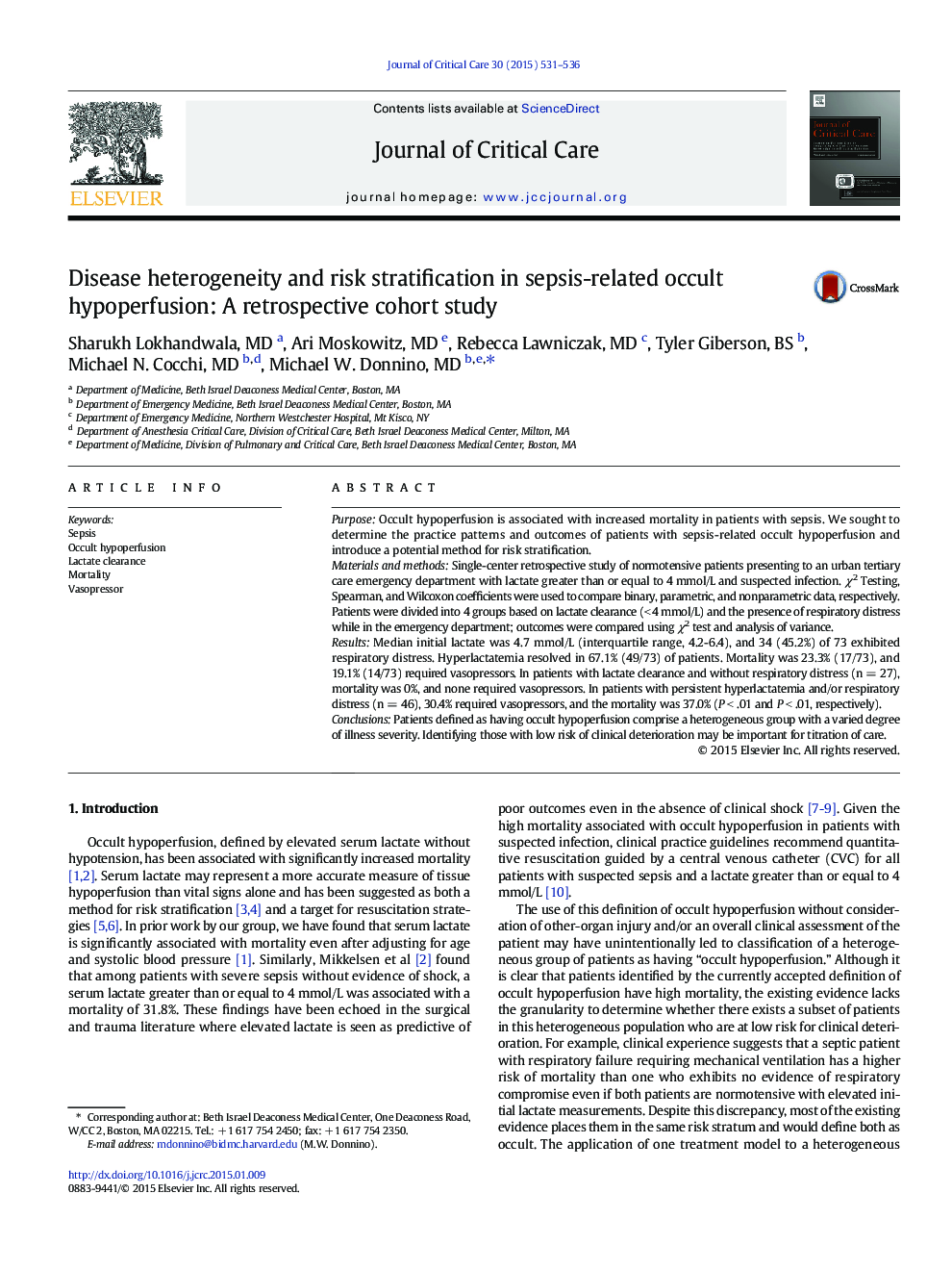| Article ID | Journal | Published Year | Pages | File Type |
|---|---|---|---|---|
| 5885593 | Journal of Critical Care | 2015 | 6 Pages |
PurposeOccult hypoperfusion is associated with increased mortality in patients with sepsis. We sought to determine the practice patterns and outcomes of patients with sepsis-related occult hypoperfusion and introduce a potential method for risk stratification.Materials and methodsSingle-center retrospective study of normotensive patients presenting to an urban tertiary care emergency department with lactate greater than or equal to 4 mmol/L and suspected infection. Ï2 Testing, Spearman, and Wilcoxon coefficients were used to compare binary, parametric, and nonparametric data, respectively. Patients were divided into 4 groups based on lactate clearance (<Â 4 mmol/L) and the presence of respiratory distress while in the emergency department; outcomes were compared using Ï2 test and analysis of variance.ResultsMedian initial lactate was 4.7 mmol/L (interquartile range, 4.2-6.4), and 34 (45.2%) of 73 exhibited respiratory distress. Hyperlactatemia resolved in 67.1% (49/73) of patients. Mortality was 23.3% (17/73), and 19.1% (14/73) required vasopressors. In patients with lactate clearance and without respiratory distress (n = 27), mortality was 0%, and none required vasopressors. In patients with persistent hyperlactatemia and/or respiratory distress (n = 46), 30.4% required vasopressors, and the mortality was 37.0% (P < .01 and P < .01, respectively).ConclusionsPatients defined as having occult hypoperfusion comprise a heterogeneous group with a varied degree of illness severity. Identifying those with low risk of clinical deterioration may be important for titration of care.
